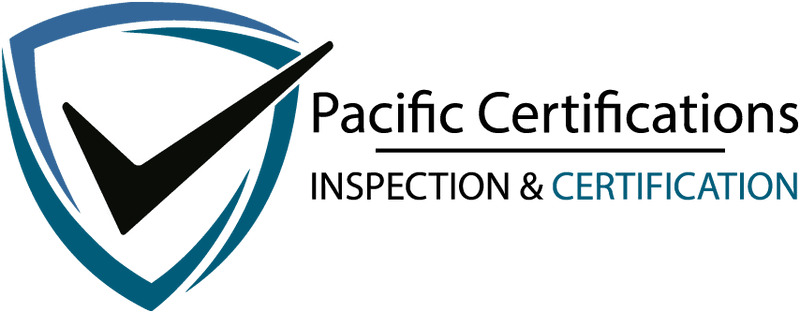
DIN EN 14511- Standards for Air conditioners specifies the testing and rating conditions for air conditioners, including air-cooled and water-cooled air conditioning units, heat pumps, and dehumidifiers. The standard is part of the EN 14500 series, which covers various aspects of air conditioning and refrigeration equipment.
Here are some key points of DIN EN 14511:
- Scope: The standard defines the scope of application, including the types of equipment covered and their intended use.
- Terminology: It provides definitions and explanations of key terms used in the standard to ensure consistent understanding and communication.
- Test Conditions: DIN EN 14511 specifies the test conditions under which air conditioning equipment should be evaluated. This includes ambient temperature, humidity, and other factors that can affect performance.
- Performance Testing: The standard outlines the procedures for testing the performance of air conditioners and heat pumps. This includes measuring parameters such as cooling capacity, heating capacity, energy efficiency, and sound levels.
- Rating: It defines the methods for rating the performance of air conditioning equipment. This is important for consumers and manufacturers to understand how well the equipment performs under standard conditions.
- Marking and Documentation: DIN EN 14511 provides guidance on how to label and document the equipment’s performance data to make it easier for consumers to compare different products.
- Conformity Evaluation: The standard also includes information on how manufacturers can demonstrate that their equipment complies with the standard.
Additionally, DIN EN 14511 is just one of many standards related to air conditioning and refrigeration equipment. These standards help ensure that products are safe, reliable, and perform as claimed, making it easier for consumers as well as businesses to select the right equipment for their needs.
What are the Requirements for DIN EN 14511
DIN EN 14511 specifies various requirements and testing procedures for air conditioners, including air-cooled and water-cooled air conditioning units, heat pumps, and dehumidifiers.
Here are some of the key requirements of DIN EN 14511:
- Scope and Definitions: The standard defines the scope of its application, including the types of equipment covered and their intended use. It also provides clear definitions and explanations of key terminology used throughout the standard.
- Classification: DIN EN 14511 classifies air conditioners and heat pumps based on their application and purpose, such as comfort cooling, process cooling, heating, or combined heating and cooling.
- Test Conditions: The standard specifies the conditions under which testing should be conducted, including ambient air temperature, humidity levels, and other factors that can affect equipment performance. These standardized conditions ensure consistency in testing and evaluation.
- Performance Testing: DIN EN 14511 outlines the procedures for testing the performance of air conditioners and heat pumps. This includes measuring parameters such as:
- Cooling and heating capacities: The standard specifies how to determine the cooling and heating capacities of the equipment under defined conditions.
- Energy efficiency: It includes requirements for assessing energy efficiency, which is typically expressed as the Seasonal Energy Efficiency Ratio (SEER) for cooling and the Seasonal Coefficient of Performance (SCOP) for heating.
- Sound levels: The standard defines methods for measuring and reporting the sound power levels of the equipment.
- Rating: DIN EN 14511 provides guidance on how to rate the performance of air conditioning equipment. This rating information is often used by consumers and manufacturers to compare different products and make informed choices.
- Marking and Documentation: The standard outlines the information that should be marked on the equipment and provided in documentation. This includes performance data, energy efficiency labels, safety information, and other relevant details.
- Conformity Assessment: Manufacturers must demonstrate that their equipment complies with the requirements of DIN EN 14511 through appropriate conformity assessment procedures. This ensures that the equipment meets the specified standards and is safe for use.
- Safety Requirements: While specific safety requirements are covered by other standards, DIN EN 14511 may refer to these standards for safety-related aspects. It is essential for manufacturers to ensure that their products meet all applicable safety standards.
It’s important to note that compliance with these standards helps ensure that products are safe, reliable, and perform as claimed, making it easier for consumers and businesses to select and use suitable equipment
What are the Benefits of DIN EN 14511?
DIN EN 14511- Standards for Air conditioners provides several benefits to various stakeholders in the air conditioning and refrigeration industry, as well as to consumers. Some of the key benefits include:
- Quality Assurance: DIN EN 14511 sets specific requirements and testing procedures for air conditioning equipment. Compliance with these standards ensures that manufacturers produce high-quality and reliable products. This, in turn, increases consumer confidence in the equipment’s performance and longevity.
- Product Performance Comparison: The standard establishes standardized testing conditions and performance metrics, making it easier for consumers and businesses to compare different air conditioning products. This helps customers make informed purchasing decisions based on objective data.
- Energy Efficiency: DIN EN 14511 includes requirements for measuring and reporting energy efficiency metrics, such as Seasonal Energy Efficiency Ratio (SEER) and Seasonal Coefficient of Performance (SCOP). This promotes the development and use of energy-efficient air conditioning equipment, leading to reduced energy consumption and lower operating costs for consumers.
- Environmental Impact: By encouraging energy efficiency and environmentally friendly refrigerants, DIN EN 14511 contributes to reducing the environmental impact of air conditioning systems. This is particularly important in the context of climate change and efforts to reduce greenhouse gas emissions.
- Safety: The standard may refer to safety-related standards, ensuring that air conditioning equipment complies with essential safety requirements. This helps protect users and the environment from potential hazards associated with the operation of such equipment.
- Market Access: Manufacturers that conform to DIN EN 14511 can demonstrate compliance with European standards, facilitating market access within the European Union and other regions that recognize these standards. This streamlines the import and export of air conditioning products.
- Regulatory Compliance: Compliance with DIN EN 14511 helps manufacturers meet regulatory requirements and standards set by governments and industry organizations. This is crucial for obtaining necessary certifications and approvals.
- Uniform Testing: Standardized testing conditions and procedures ensure consistency in how air conditioning equipment is evaluated, enhancing the credibility of test results and reducing the potential for disputes.
- Innovation and Research: The standard encourages ongoing research and development efforts in the air conditioning industry to meet or exceed the established performance requirements. This can lead to the development of new technologies and more efficient systems.
- Consumer Protection: DIN EN 14511 provides consumers with a level of confidence that the products they purchase have undergone rigorous testing and meet established performance criteria, reducing the risk of subpar or unsafe equipment.
In summary, DIN EN 14511 plays a critical role in improving the quality, performance, and energy efficiency of air conditioning equipment while promoting safety and environmental sustainability. It benefits manufacturers, consumers, and the industry as a whole by creating a standardized framework for the evaluation and comparison of air conditioning products.
Who needs DIN EN 14511- Standards for Air Conditioners?
DIN EN 14511, as a standard for air conditioners, is relevant to several stakeholders within the air conditioning and refrigeration industry, as well as regulatory bodies and consumers.
Here are the key groups of people and organizations that need to consider and use DIN EN 14511:
- Manufacturers: Manufacturers of air conditioning equipment, including air conditioners, heat pumps, and dehumidifiers, need to adhere to DIN EN 14511 to ensure that their products meet established performance and safety standards. Compliance with these standards helps manufacturers produce high-quality and reliable equipment.
- Regulatory Authorities: Regulatory bodies and government agencies responsible for setting and enforcing safety and performance standards for air conditioning and refrigeration equipment may reference or require compliance with DIN EN 14511 as part of their regulatory framework. This ensures that products entering the market meet specific criteria for safety and performance.
- Testing Laboratories: Laboratories that conduct performance testing and certification of air conditioning equipment often follow DIN EN 14511 testing procedures and conditions to evaluate products and provide accurate performance data to manufacturers and consumers.
- Consumers: Consumers who are purchasing air conditioning equipment can benefit from DIN EN 14511 by using the standardized performance data and energy efficiency ratings to make informed decisions about which products best suit their needs and budget.
- Design Engineers: Design engineers and HVAC (Heating, Ventilation, and Air Conditioning) professionals use DIN EN 14511 as a reference to ensure that the equipment they specify and install complies with recognized performance and safety standards.
- Consultants and Contractors: Consultants and contractors involved in the design, installation, and maintenance of HVAC systems rely on DIN EN 14511 to select appropriate equipment that meets specific project requirements and adheres to industry standards.
- Environmental and Energy Efficiency Organizations: Organizations and agencies focused on environmental conservation and energy efficiency use DIN EN 14511 as a means to promote the use of energy-efficient air conditioning systems and environmentally friendly refrigerants.
- Trade Associations: Industry associations often provide guidance and support to manufacturers, contractors, and professionals within the HVAC industry. These associations may reference DIN EN 14511 as a best practice and offer resources for compliance.
- International Trade: Manufacturers and exporters of air conditioning equipment looking to access international markets, especially in Europe, need to ensure that their products comply with DIN EN 14511 to meet European Union standards and regulations.
- Research and Development: Researchers and developers in the field of air conditioning and refrigeration may use DIN EN 14511 as a foundation for designing and testing innovative technologies and systems.
In summary, DIN EN 14511 serves as a valuable reference and guideline for a wide range of stakeholders involved in the design, production, testing, installation, regulation, and use of air conditioning equipment. Compliance with this standard helps ensure the quality, safety, and performance of air conditioning products in the market.
At last, Pacific Certifications is accredited by ABIS, you need more support with DIN EN 14511- Standards for Air conditioners, please contact us at +91-8595603096 or support@pacificcert.com
Read About: BS EN 13814-1-Safety of amusement rides







